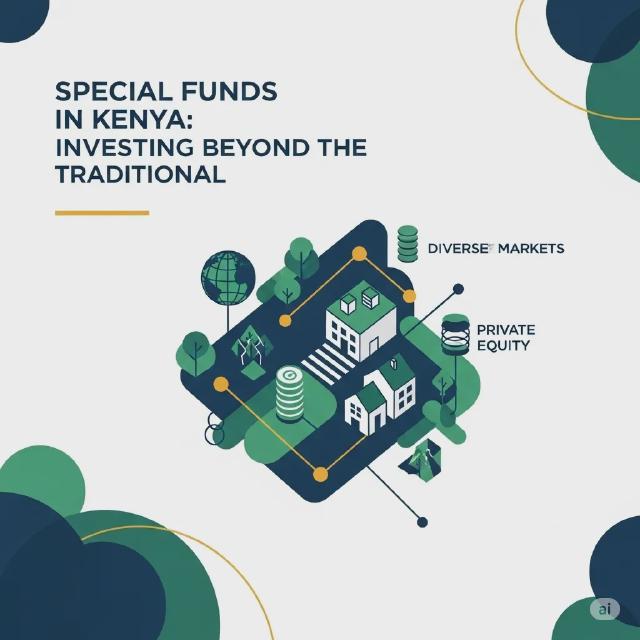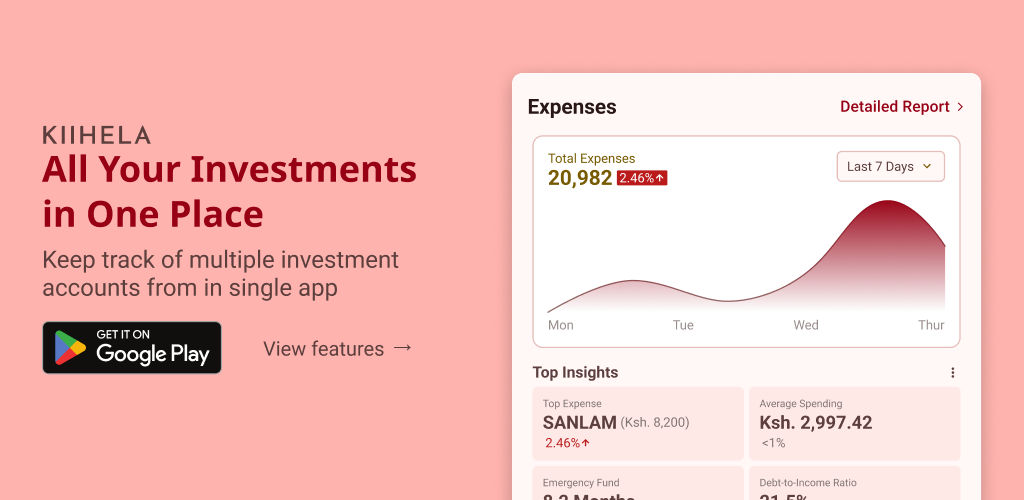Introduction
A special fund a type of Collective Investment Scheme (CIS). Like other CIS, rely on multiple investors contributing money individually in order to create a single pool of capital. This capital is then managed, invested, and administered by a professional entity known as a Fund Manager.
Collective Investment Schemes (CIS) in Kenya are governed under The Capital Markets (Collective Investment Schemes) Regulations, 2013.
Special Funds have more operational flexibility compared to standard Unit Trusts (like Money Market Funds). They can invest in a wider variety of assets, international markets, and sometimes use leverage (borrowing) to enhance potential gains. As one might imagine, this approach targets higher returns, but also involves more risks.
This guide will delve into the structure, objectives, benefits, risks, and essential considerations for navigating Special Funds in the Kenyan market.
Structure and Governance of Special Funds
Special Funds in Kenya operate under a regulated structure designed to ensure professional management, oversight, and protection of investor assets. This framework, overseen by the Capital Markets Authority (CMA), mandates specific roles and responsibilities in the structure of a Special fund in the fund.
The Fund Manager:
The Fund Manager develops and implements the investment strategy, selecting assets to invest in according to the fund’s objectives.
The Trustee:
The investor’s watchdog, a Trustee is an independent entity, often a bank or specialized trust company that holds legal title to the fund’s assets on behalf of investors. They oversee the fund and ensure operations comply with the law and the fund’s Information Memorandum.
The Custodian:
The safekeeper of assets - typically a CMA-approved bank, a Custodian holds the fund’s assets separate from the Fund Manager’s own assets, providing a critical layer of security against misuse or loss.
This role is usually fulfilled by reputable commercial banks operating with specific custodial service licenses.
How Special Funds Invest
Unlike traditional funds often benchmarked against specific market indices, Special Funds typically pursue more distinct objectives, often aiming for absolute returns, significant inflation hedging, or capital growth by tapping into less conventional opportunities.
Their core strategy revolves around investing in areas typically inaccessible or restricted for standard Unit Trusts. However, the investment focus of specific funds is diverse and dictated by their mandate - outlined in each fund’s Information Memorandum (IM).
Common investment areas include global markets (e.g. global equities, bonds, commodities), alternative assets (e.g. real estate, private equity, infrastructure), and specialized strategies (e.g. derivatives, structured products). Here
Many Special Funds in Kenya are positioned as “Multi-Asset” Funds, meaning they strategically blend several of the above categories (and potentially some traditional assets) to achieve diversification and specific risk-return profiles.
Fund managers employ intensive research and active management, sometimes utilizing leverage (borrowing) to achieve the fund’s objectives.
Benefits of Investing in Special Funds
While carrying higher risks, Special Funds offer several advantages beyond conventional investments.
Access to unique and global opportunities
Special Funds provide a gateway to asset classes and markets often out of reach for individual investors. This includes direct participation in international stock and bond markets, and global commodities, private Kenyan companies (private equity), and large-scale real estate development projects.
Enhanced portfolio diversification
Special Funds can significantly improve overall portfolio diversification thanks to their exposure to global economies, different asset types (e.g., private equity, commodities).
Potential for enhanced returns
Thanks to their increased flexibility, Special Funds have the potential to generate returns exceeding those of traditional funds, bank deposits, and Money Market Funds which are limited to domestic markets.
Professional management and expertise
Navigating complex alternative assets and global markets requires specialized knowledge. Special Funds are managed by licensed professionals with expertise in researching, selecting, and managing these sophisticated investments.
Structured and regulated environment:
Special Funds operate within the CMA’s regulatory framework. The structure provides a formal governance system, regular reporting requirements, and oversight mechanisms designed to protect investor interests.
Risks of Investing in Special Funds
The pursuit of higher returns through flexible and often complex investment strategies means Special Funds inherently carry higher and more varied risks compared to traditional Unit Trusts like Money Market or Bond Funds.
Potential investors must understand and be comfortable with these risks before committing capital. Key risks include:
Market risk: Investments are subject to market fluctuations driven by economic conditions, geopolitical events, interest rate changes, and investor sentiment.
Liquidity risk: Many underlying assets (e.g., real estate projects, private equity stakes) are inherently illiquid, meaning they cannot be quickly sold without a substantial loss in value.
Accessing your money quickly may not be possible, due to:
- Lock-in periods: Many Special Funds require investors to commit capital for a minimum period (e.g., 6 months, 1 year, or longer).
- Redemption restrictions: Withdrawals might be limited to specific intervals (e.g., quarterly) or require lengthy notice periods, even after the lock-in period.
Valuation risk: Accurately pricing illiquid assets like private company shares or unique properties can be challenging and subjective. Valuations might be infrequent, potentially leading to discrepancies between the reported Net Asset Value (NAV) and the true realizable value.
Leverage risk: The use of borrowed funds (leverage) can magnify both gains and losses. While it can boost returns in favourable markets, it can significantly deepen losses during downturns, potentially even leading to a total loss of invested capital in extreme scenarios. Investors should check the Information Memorandum (IM) for leverage limits and monitor reported leverage levels.
Currency (Foreign Exchange) risk: For funds investing globally, fluctuations in exchange rates between the KES and foreign currencies can significantly impact returns when translated back into KES. Even for USD-denominated funds, the underlying assets might be in other currencies, creating exposure.
Concentration risk: Unlike broadly diversified traditional funds, Special Funds may concentrate investments in specific sectors, geographies, or even a small number of deals. While this can drive high returns if successful, poor performance in a concentrated area can heavily impact the entire fund.
Manager & strategy execution risk: The fund’s success is heavily reliant on the skill, experience, and integrity of the Fund Manager and their team. Poor investment decisions, inadequate risk management, or failure to execute the stated strategy effectively are significant risks.
Style drift risk: There’s a risk that the fund manager might deviate from the investment style or objectives stated in the IM, perhaps chasing short-term performance. This could lead to unintended risk exposures or misalignment with the investor’s original expectations.
Credit & counterparty risk: If the fund invests in debt instruments (bonds, private loans), there’s a risk the issuer defaults. For derivatives or other contracts, there’s counterparty risk – the risk that the other party to the transaction fails to meet their obligations.
Fee impact: Special Funds often have higher fee structures, potentially including significant management fees (e.g., up to 5-6% annually mentioned in some reports) and performance fees (a percentage of profits above a certain threshold). These fees directly reduce investor returns.
Regulatory risk: Changes in regulations by the CMA or other relevant bodies, or shifts in tax laws, could affect the fund’s operations or the tax treatment of returns.
What to consider before investing in special funds
Investing in Special Funds requires careful thought and alignment with your personal financial situation and goals. Before committing capital, consider the following critical factors:
- Personal considerations
While potentially more profitable, special funds aren’t the right investment vehicle for everyone. Before investing, there are personal considerations you have to make.
- Risk tolerance: Special Funds come with volatility which means increased possibility of losing your money. If you’re not comfortable with risk, you may want to consider more traditional investments like Money Market Funds.
- Investment horizon: Special finds focus on illiquid assets and long-term strategies. They are best suited for investors with long-term goals (3-5 years or more).
- Financial capacity: Can you afford the minimum investment and tie up this capital for the required duration without impacting your essential financial needs?
- Sophistication: The complexity often makes these funds more appropriate for investors with some financial knowledge or access to professional advice (‘sophisticated investors’).
Minimum investments and lock-in periods
Special Funds have significantly higher minimum investment requirements compared to standard Unit Trusts. Initial investments can range from KES 250,000 to KES 500,000 or more (or the USD equivalent, e.g., USD 2,500). Minimum top-up amounts also apply.
Many funds also include a mandatory lock-in period - 6 months or longer - during which you cannot withdraw your funds.
The fee structure
Fees can greatly impact your net returns. Typical fees include:
- Management fee: A percentage of the assets under management (AUM) charged proportionally over the year.
- Performance/Incentive Fee: Charged on returns exceeding a predefined benchmark or “hurdle rate”. For example, a fund might charge 10% on all returns above a 25% annual hurdle rate.
- Other fees: Check for potential entry fees, exit fees (especially for early withdrawal if permitted), trustee fees, or custodian fees that might be passed on. High combined fees (MER - Management Expense Ratio) create a significant drag on performance.
- Due diligence
The Information Memorandum (IM) or Prospectus is essential reading. Pay close attention to:
- Investment objectives: Does it align with your goals?
- Asset allocation: What exactly will the fund invest in?
- Fund manager: Their experience and track record.
- Valuation policy: How are illiquid assets valued?
- Leverage policy: Is leverage used, and what are the limits?
- Fact sheets: are issued monthly or quarterly for recent performance.
Tax Implications:
Understand how returns from the Special Fund will be taxed. This typically involves withholding tax on income distributions. Capital gains tax might also apply depending on the fund structure and underlying transactions.
Popular Special Funds in Kenya
Mansa X Special Fund
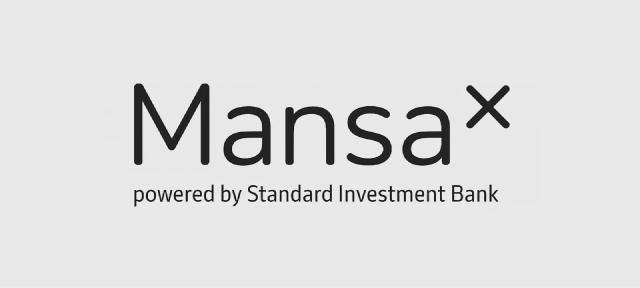
Launched in January 2019, it was the first fund to be licensed by Kenya’s market regulator under the “special fund” category. It is officially licensed as a Special Collective Investment Scheme (CIS) by the Capital Markets Authority.
The fund is one of the largest in Kenya, with its assets under management (AUM) reaching Ksh. 34.23bn ($264m) in September 2024. It quickly surpassed large traditional funds that focus exclusively on domestic financial markets.
Investment Strategy: Mansa X employs a sophisticated long/short trading model, enabling it to invest in a broad range of financial instruments across both local and global markets. Its primary objective is to generate substantial capital growth for its investors. 1 A key element of its strategy is the ability to access and trade in major global financial centers, including Sydney, Tokyo, Nairobi, London, and New York, on a 24-hour basis. This continuous market access is designed to maximize earning potential. 2 Furthermore, the fund strategically utilizes leverage as part of its investment approach.
Asset Classes: The fund maintains a highly diversified portfolio, spanning various asset classes. These include Currencies, Precious Metals, Commodities, Stock Indices, Single Stocks, Cash, and Fixed Income instruments. Specific examples of its holdings include Fixed Income Instruments, Interest Rate Derivatives, positions in the S&P 500 and Nasdaq 100 indices, Natural Gas, Canadian Dollar, and individual equities like Microsoft Corporation.
Key Features:
Minimum Investment: KES 250,000 for the KES Fund and USD 2,500 for the USD Fund. This minimum is notably stricter than the CMA’s general requirement of KES 100,000 for special funds, indicating a focus on sophisticated investors.
Minimum Top-ups: KES 100,000 for the KES Fund and USD 1,000 for the USD Fund.
Lock-in Period: A 6-month lock-in period is applied to investments. Following this initial period, withdrawals are typically processed within 2-3 working days.
Custodian: I&M Bank serves as the custodian for both the KES and USD Mansa X Funds, ensuring the safekeeping of assets.Currency Options: The fund offers both Kenyan Shilling (KES) and US Dollar (USD) denominated options, catering to diverse investor preferences and hedging against currency fluctuations. Performance Highlights:
Mansa X has demonstrated robust performance, achieving an impressive 29.38% net after fees for its Kenya shilling fund in the previous year, significantly surpassing its 20% target.
Since its inception, the KES Fund has consistently delivered an average net return of 17.72% per annum to its clients.
Illustratively, a KES 1 million investment in the KES Fund earned a net return of KES 1,803,460.03 over a 72-month
period. Similarly, a USD 10,000 investment in the USD Fund generated a net return of $3,011.62 over 27 months.
Assets Under Management (AUM): As of December 31, 2024, the fund’s AUM stood at KES 39.05 billion. In September 2024, its AUM was Sh34.23 billion ($
264 million), representing 10.8% of total assets managed by collective investment schemes in Kenya, solidifying its
position as the country’s third-largest managed fund.
Target Investor Profile: While not explicitly stated, the substantial minimum investment requirement (KES 250,000) and the fund’s reliance on complex strategies, such as leverage and short selling, strongly indicate that it is targeted towards sophisticated investors who possess a clear understanding and tolerance for such elevated risks.
Mansa X’s distinction as the “first fund to be licensed” under the special fund category, coupled with its rapid ascent to become the “third largest managed fund” and its impressive performance (29.38% return) , represents a pivotal moment in the Kenyan investment landscape. This success is explicitly cited as having “inspired more investment banks… to launch their own special funds”. This pioneering role and robust performance effectively validated the special fund model in Kenya, demonstrating a significant investor appetite for higher-risk, higher-return, and globally diversified products. This fund’s success fundamentally opened up a new, more sophisticated segment within the Kenyan capital markets, setting a precedent for other financial institutions to innovate and driving the overall market towards more advanced investment offerings.
Oak Special Fund
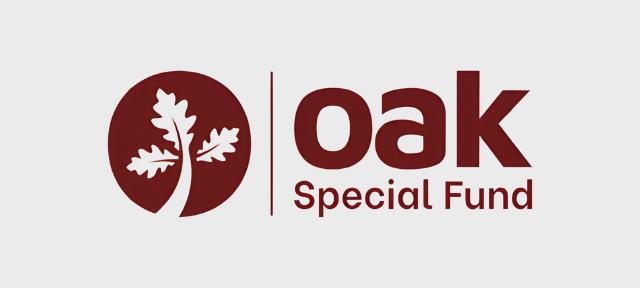
The Oak Special Fund, managed by Faida Investment Bank (FIB) , is a relatively new but rapidly growing player in the Kenyan special funds market.
Faida Investment Bank Limited received approval to establish the Oak Multi-Asset Special USD Fund under in November 2024. It is a USD-denominated fund targeting high-yield assets such as global sovereign bonds, corporate bonds, and derivatives, offering medium to high-risk investment options and a T+2 settlement period after a six-month lock-in.
Investment Strategy: Oak Special Fund is structured as a Leveraged Asset Allocation Fund, domiciled in Kenya. It employs a diverse trading model designed to optimize returns regardless of prevailing market conditions, while simultaneously minimizing risks through stringent risk management techniques. The fund provides investors with a unique opportunity to access both local and global markets.
Asset Classes: The fund strategically allocates capital across a wide array of asset classes, both globally and locally, to ensure a diversified and balanced portfolio. These include Global Forex Trading, Precious Metals (such as gold, silver, and platinum, serving as a hedge against economic uncertainty and inflation), Commodities (essential raw materials like oil and wheat), Global Stocks & ETFs, Government Securities, NSE Equities, and Commercial Papers. Its portfolio also encompasses Currency Trading, Cash & Cash Equivalents, NSE Derivatives, International Equities, Sovereign Bonds, and other Derivatives (futures and options).
Key Features:
- Base Currency: Kenya Shilling (KES).
- Minimum Investment: KES 500,000. This minimum is also stricter than the CMA’s general requirement, aligning with other special funds targeting sophisticated investors.
- Minimum Top-up: KES 50,000.
- Lock-in Period: A 6-month lock-in period applies.
- Custodian: I&M Bank.
- Trustee: Co-operative Bank of Kenya.
Fee Structure:
- Management Fees: 6% per annum, pro-rated.
- Withdrawal Fees: 0%.
Performance Highlights:
- The fund targets a return of 20% net of fees, though it explicitly states this is a targeted return and not a guarantee.
- It successfully surpassed its 20% target for the previous year, achieving an impressive 29.38% net after fees for its Kenya shilling fund.
- For the first quarter of 2025, the Total Fund Return was 4.66% absolute, which annualizes to 18.64%.
- An illustrative KES 1 million investment on January 1, 2025, would have yielded KES 48,314.49 by the end of the first quarter of 2025.
- Assets Under Management (AUM): The fund’s AUM reached KES 2.71 billion. It showed significant growth, from Sh927 million ($7.2 million) at the end of 2024 to Sh2.05 billion ($15.8 million) in February.
Target Investor Profile: Oak Special Fund offers investors a unique opportunity to access both local and global markets. Given its KES 500,000 minimum investment and the employment of leveraged and complex trading strategies, it is clearly aimed at sophisticated investors who can comprehend and accept the associated risks.
Oak’s relatively recent inception (February 2024) combined with its rapid Asset Under Management (AUM) growth and ambitious targeted returns (20% net of fees) , along with its reported actual performance (29.38% in 2024) , points towards an aggressive market entry strategy. The higher management fee (6% p.a.) appears to be positioned as a trade-off for these high-performance aspirations and the active, leveraged global strategies employed. This suggests that Oak is actively positioning itself as a high-performance contender within the special funds segment, directly competing with established players like Mansa X. Its strategy involves offering similar global exposure and aiming for superior returns. The fund’s rapid growth since its launch indicates strong investor confidence in its active management approach and its ability to deliver on its ambitious targets, despite the higher fees and inherent risks associated with leveraged global investments.
| Comparison of Special Investment Funds in Kenya | ||||||
|---|---|---|---|---|---|---|
| Fund | Min. Investment (KES) | Min. Top-up (KES) | Lock-in | Management Fee | Performance Fee | Risk |
| SIB Mansa X Special Fund | 250,000 | 100,000 | 6 months | 5% | 10% above Hurdle Rate (KES 25%, USD 15%) | Implied High (leverage, global) |
| Oak Special Fund | 500,000 | 50,000 | 6 months | 6% | - | Leveraged, High |
| Etica Special Wealth Fund (KES) | 1,000,000 | 500,000 | 6, 9, 12 months | 1.50%-2.25% | - | Medium |
| Old Mutual Special Fixed Income Fund | 1,000,000 | 100,000 | 6 months | 2% + VAT | - | Low (Conservative) |
| Madison Wealth Special Fund | 1,000,000 | 1,000,000 | 6, 12 months | 2% | - | Moderate to Aggressive |
| Source: Fund Data Compilation | ||||||
Etica Special Wealth Fund
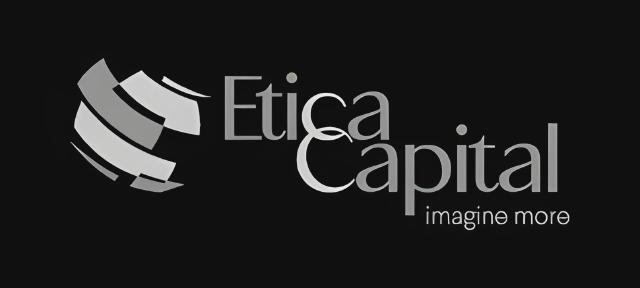
The Etica Special Wealth Fund (KES), managed by Etica Capital Ltd , is another notable entrant in Kenya’s special funds market, focusing primarily on the fixed income space. The fund’s inception date was June 2023 , and it operates under the regulation of the Capital Markets Authority.
Investment Objective: The primary investment objective of the Etica Special Wealth Fund (KES) is to generate attractive returns by investing in a diverse pool of assets within the fixed income sector. It aims to achieve superior risk-adjusted returns over a medium to long-term investment horizon. A concurrent objective is to obtain a high level of current income while diligently protecting investor’s capital.
Asset Classes: The fund primarily invests in a diverse pool of assets within the fixed income space. As of April 2025, its specific asset allocation includes: Government Securities (49%), Commercial Papers (24%), Fixed Deposits (18%), and Cash & Call Deposits (9%).
Key Features:
- Currency: Kenyan Shilling (KES).
- Minimum Investment: KES 1,000,000.
- Minimum Top-up: KES 500,000.
- Compounding Frequency: Interest is compounded daily.
- Trustee: Co-operative Bank Kenya Ltd.
- Custodian: Equity Bank Kenya Ltd.
- Benchmark: The fund’s performance is benchmarked against the 182 Day T-Bill +2.0% p.a.
- Risk Profile: It is classified as a medium-risk fund, making it suitable for investors with a medium-term investment horizon.
Fee Structure:
- Initial Fees: NIL.
- Management Fee (p.a.): The fund offers different classes (A, B, C) with varying management fees based on the lock-in periods. Class A: 2.25%, Class B: 2.00%, Class C: 1.75%.
Performance Highlights (Effective Annual Yield, net of fees, gross of withholding tax):
- April 2025: Class A: 14.38%, Class B: 14.58%, Class C: 14.79%.
- March 2025: Class A: 14.54%, Class B: 14.79%, Class C: 15.04%.
- February 2025: Class A: 14.72%, Class B: 15.11%, Class C: 15.51%.
- 1-Year Average (as of April 2025): Class A: 16.3%, Class B: 16.6%, Class C: 16.8%.
Target Investor Profile: The fund is suitable for investors with a medium-term investment horizon. The substantial minimum investment of KES 1,000,000 also points to a target audience of high-net-worth individuals.
Etica’s offering of Class A, B, and C units, each associated with different lock-in periods and corresponding management fees , represents a sophisticated approach. Longer lock-in periods are rewarded with lower management fees. This tiered structure incentivizes longer-term capital commitment from investors. This allows Etica to manage its liquidity more effectively by securing longer-term capital, which can then be deployed into potentially less liquid, higher-yielding fixed-income instruments. For investors, it offers a choice: greater liquidity at a slightly higher cost, or a lower cost for a longer commitment, aligning with different investment horizons and liquidity needs. The adjustment in fees highlights the dynamic nature of fund management in response to market conditions.
CIC Global Special Fund
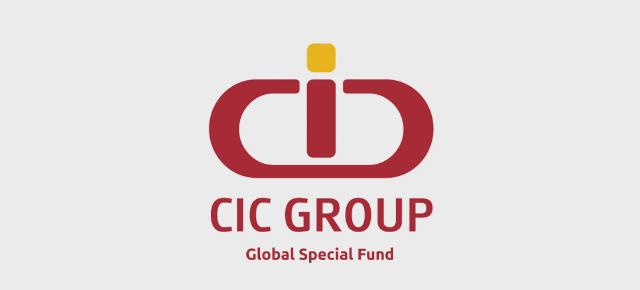
The CIC Global Special Fund, offered by CIC Asset Management Limited , represents a strategic expansion by one of Kenya’s largest fund managers into the specialized investment space. It was officially approved by the Capital Markets Authority (CMA) on November 14, 2024. It forms an integral part of the broader CIC Unit Trust Scheme.
Investment Strategy: The fund is designed to target investors who fall within the medium- to high-risk category and are seeking a balanced approach to achieving capital growth alongside regular income. The income generation is actively managed through careful consideration of interest rate and credit risk exposures.
Asset Classes: Specific asset classes for the CIC Global Special Fund are - in the provided information. However, Special Funds generally offer access to unique and global opportunities, including international stocks and bonds, global commodities, private equity, and real estate. Given the fund’s name, “Global Special Fund,” it is highly probable that it incorporates a significant component of international exposure. Other CIC funds typically invest in short-term interest-bearing instruments, government securities, and equities.
Key Features: Specific details regarding minimum investment, top-up amounts, and lock-in periods for this fund are not available in the provided sources.
Fee Structure: Specific fees for the CIC Global Special Fund are -.
Performance Highlights: Specific performance data for this fund is not available. However, it is noteworthy that the broader CIC Unit Trust, as a whole, managed Sh70.32 billion ($540 million) in September 2024, translating to a substantial 22.3% market share, making it the largest managed fund in Kenya overall.
Target Investor Profile: The fund specifically targets investors who are comfortable with a medium- to high-risk profile.
CIC Unit Trust is already the “largest managed fund in Kenya”. Their launch of a “Global Special Fund” indicates a strategic move to diversify their product offering and capture the growing demand for sophisticated, internationally exposed investments, rather than solely relying on their dominant position in traditional unit trusts. This signifies that even market leaders are adapting to the evolving landscape of investor preferences by venturing into higher-risk, globally-oriented “special funds.” It suggests a broader industry trend where traditional fund managers are expanding their mandates to remain competitive and cater to the full spectrum of investor needs, from conservative to medium-to-high risk. The absence of a dedicated public-facing fact sheet or IM on the fund manager’s website, despite CMA approval, highlights a potential challenge in market transparency and investor access to critical information. This suggests either a very recent launch where public materials are still being prepared, or that the fund is primarily targeted at a very specific, perhaps institutional or private, client base where information is disseminated directly rather than broadly published. For the average sophisticated investor, this lack of readily available detail could be a barrier to entry and underscores the importance of direct engagement with fund managers and persistent due diligence.
Old Mutual Special Fixed Income Fund
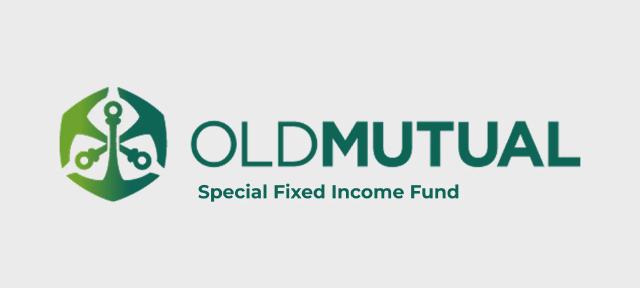
The Old Mutual Special Fixed Income Fund, managed by Old Mutual Investment Group (K), is designed for investors prioritizing stability and capital protection within the fixed income segment. It has a long operational history, with its launch date recorded as March 24, 2003. It operates under the Old Mutual Unit Trust Scheme.
Investment Strategy: This fund is characterized as a fixed-duration income fund, meticulously designed to optimize interest income while simultaneously ensuring a high degree of capital protection. Its strategy involves investing predominantly in high-quality fixed-income instruments to deliver stable returns, making it an appealing choice for investors who seek both security and growth. The fund manager actively lengthens the duration of the investment book to lock in decent yields, reflecting a proactive approach to managing interest rate outlooks.
Asset Classes: The fund’s investment focus is almost exclusively on high-quality fixed-income instruments. As of March 2025, its asset allocation was heavily concentrated in Government Securities (95.2%), with smaller allocations to Fixed Deposits (4.7%) and Cash (0.1%). In terms of duration, 95.2% of its assets were allocated to instruments with maturities greater than 12 months, 4.7% to 3-6 months, and 0.1% to 0-3 months.
Key Features:
- Currency: Kenyan Shilling (KES).
- Minimum Investment: KES 1,000,000.
- Minimum Top-Up Amount: KES 100,000.
- Minimum Investment Period: 6 months.
- Custodian: KCB Bank Kenya Limited.
- Trustee: KCB Bank Kenya Limited.
- Risk Profile: The fund is categorized as “Low (Conservative)” risk.
Fee Structure:
- Initial Fee: Nil.
- Service Fee: 2% per annum + VAT.
Performance Highlights:
- The fund’s yield was reported as 15.5% p.a. as of January 17, 2025.
- Its Annual Effective Yield settled at 12.5% as of the end of March 2025.
- The Effective Yield for March 2025 was 13.8%.
- Cumulative Performance (as of March 2025): The fund outperformed its benchmark over various periods: 3 months (Fund: 3.4%, Benchmark: 2.4%), 6 months (Fund: 7.5%, Benchmark: 6.2%), and Since Inception (Fund: 11.6%, Benchmark: 10.4%).
Note on Dynamic Yields: Multiple reported yields (15.5%, 12.5%, 13.8%) for different dates highlight the dynamic nature of fixed income yields and the importance for investors to consult the latest fact sheets for the most current performance data.
Target Investor Profile: This fund is best suited for High-net-worth individuals seeking stable, predictable returns; Corporate entities looking to diversify their investment portfolios; and Institutional investors focused on long-term capital growth with an emphasis on security.
The Old Mutual Special Fixed Income Fund’s almost exclusive allocation to Government Securities (95.2%) and its explicit “Low (Conservative)” risk profile indicate a strategic positioning for capital preservation and stability rather than aggressive growth. This fund caters to a specific segment of sophisticated investors who, while seeking higher returns than traditional fixed deposits, prioritize capital protection and lower volatility within the “special fund” category. This demonstrates that “special” does not always equate to “high-risk” across the board. Instead, it signifies flexibility to target specific market niches—in this case, enhanced fixed income—thereby offering investors a wider range of choices within the “special funds” category itself.
Madison Wealth Special Fund
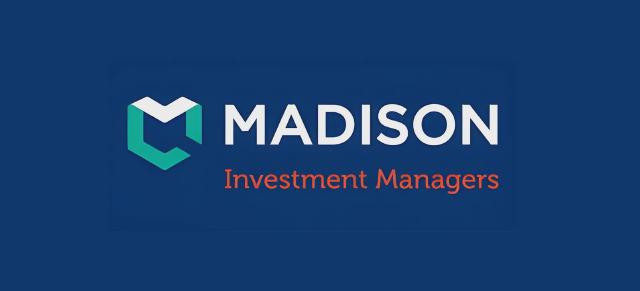
The Madison Wealth Special Fund, offered by Madison Investment Managers Limited , is designed for high-net-worth individuals and various entities seeking a balance of high yield and capital preservation.
Investment Objective: The fund aims to enhance returns while securing steady capital growth by investing in a diversified portfolio of high-yielding securities across both local and international markets. A core tenet of its strategy is prioritizing capital preservation, delivering high returns, and providing semi-annual cash flows.
Asset Classes: The fund focuses on a high-yielding and well-diversified portfolio of securities. Its investment universe includes various fixed income instruments such as government and corporate debt securities, fixed deposits with selected banks, Kenyan quoted and unquoted equities, investments in other collective investment schemes, and offshore investments. As of January 2025, its specific asset allocation was: CBK Treasury Bonds (65.9%), Commercial Paper ( 17.1%), and Fixed Deposits (17.0%).
Key Features:
Initial Minimum Investment: KES 1,000,000.
Minimum Top-up: KES 1,000,000.
Tenor/Lock-in Period: Investments can be for 6 months or 12 months, and are renewable. While withdrawals are processed in T+1 working day , they are generally discouraged within the chosen tenor to ensure the achievement of the indicative rate. Funds, along with any distributed interest, become fully accessible at the end of the specified tenure.
Income Distribution: The fund provides monthly interest distribution.
Custodian: Standard Chartered Bank Kenya Limited.
Auditors: Grant Thornton Kenya.
Investment Horizon: Less than one year.
Risk Profile: Classified as Moderate to Aggressive.
Fee Structure:
- Management fees: 2%.
The fund’s reported returns are quoted “net of fees and gross of withholding tax”. No other specific performance fees are detailed in the available information.
Performance Highlights:
- The fund reports a Weekly Average Daily Yield of 12.70% and a Weekly Average Effective Annual Yield of 13.54%.
- Its Effective Annual Returns are stated to be between 13%-15%.
- An indicative rate of 15.5% is provided, though it is explicitly noted that wealth fund rates are not guaranteed and fluctuate daily based on financial market performance.
- The January 2025 return (Effective Annual Yield) was 14.77%.
- The fund achieved an FY 2024 Return of 18.71%.
Target Investor Profile: The fund is ideal for conservative, high-net-worth investors seeking both stability and wealth growth. This broad target audience includes professionals, SACCOs (Savings and Credit Co-operative Societies), churches, learning institutions, Non-Governmental Organizations (NGOs), Microfinance Institutions (MFIs), and Small and Medium-sized Enterprises (SMEs).
Madison’s fund targets “conservative, high-net-worth investors” but also states a “Moderate to Aggressive” risk profile. Its asset allocation includes a significant portion of government securities (65.9%) , which are typical for conservative fixed income, but also allows for investments in “Kenyan quoted and unquoted equities, other collective investment schemes, and offshore investments”. This suggests a nuanced strategy. Madison is attempting to bridge the gap between purely conservative fixed-income funds and more aggressive multi-asset funds. By targeting a broad range of high-net-worth entities (including institutions like SACCOs and SMEs), it offers a diversified portfolio that aims for higher returns than traditional fixed income while still emphasizing capital preservation. This indicates a tailored approach to cater to the varied risk appetites within the high-net-worth segment.
DAL High Yield Special Fund

Dry Associates Investment Bank, an established player since 1994, converted its Balanced Fund into the DAL High Yield Special Fund in late 2024. It focuses on high-yield returns through Kenyan and East African government securities and corporate fixed-income investments. Targeting moderate to aggressive investors, the fund provides structured asset allocation across short- and long-term fixed-income securities.
Investment Strategy: The fund is designed to provide income over the medium to long-term by investing in a diversified portfolio of fixed income securities. It aims for a weighted average duration of no longer than sixty (60) months. A key aspect of its strategy is to achieve higher yields than traditional money market funds by having a longer duration and a larger exposure to corporate debt relative to bank and government debt. The fund’s overall emphasis is on capital appreciation.
Asset Classes: The fund invests in fixed income and equity securities , specifically a diversified portfolio of fixed income instruments. Dry Associates generally offers a range of fixed income products, including Commercial Paper, Corporate Bonds, Fixed Deposits, and Treasury Bills and Bonds.
Key Features:
- Geographic Focus: The fund’s primary geographic focus is Kenya and other East African Community countries.
- Information Availability: Comprehensive details, such as a dedicated fact sheet or information memorandum for this specific fund, are not readily available in the provided sources. For detailed information, direct contact with Dry Associates Investment Bank is recommended.
- Fee Structure: Specific fees for the Dry Associates DAL High Yield Special Fund are - in the provided information.
Performance Highlights: Specific performance data for this particular fund is not available in the snippets. While general yields for the Dry Associates KES Money Market Fund are provided , these pertain to a different fund. One source mentions a fact sheet for this fund showing interest rate returns , but the actual data is not presented.
Target Investor Profile: While not explicitly stated, the fund’s “High Yield” designation and its approval under " Alternative Investments" legislation suggest it is aimed at investors seeking higher returns and who are comfortable with the potentially higher risks associated with longer-duration corporate debt compared to traditional fixed income options.
The recent launch of Dry Associates DAL High Yield Special Fund in January 2025 signifies a continued expansion and diversification of the special funds market in Kenya, with a specific focus on higher-yielding fixed income. The entry of an established player like Dry Associates into the “Special High Yield Fund” category in early 2025, following the success of pioneers like Mansa X, indicates a strong and sustained market trend. This suggests that the demand for alternative, higher-yielding products is not a fleeting phenomenon but a growing structural shift in the Kenyan investment landscape. This new fund’s focus on longer-duration corporate debt for higher yields, differentiating it from traditional money market funds , further segments the special funds market, offering even more tailored options for investors with specific risk-return preferences within the fixed income space.
Conclusion
Special Funds have a lot of operational flexibility, which translates in potentially higher returns compared to traditional investments. However, they also come with higher and more complex risk profile. Investors must consider their personal alignment with the focus of a fund.
Ultimately, deciding whether to invest in a Special Fund requires thorough due diligence. Carefully rea theInformation Memorandum and understand the strategy utilized by the fund, the fee structure, and potentially seeking guidance from a licensed financial advisor.

